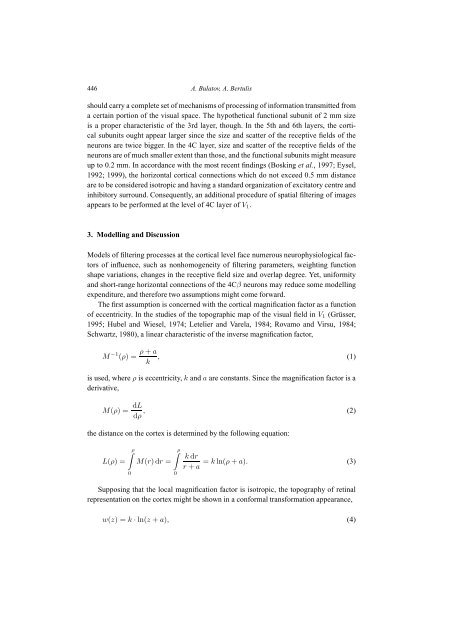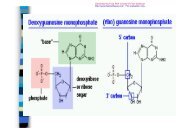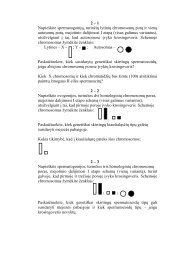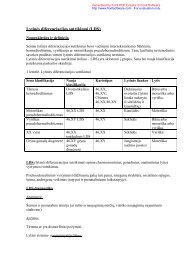stimuli
Visual Image Filtering at the Level of Cortical Input
Visual Image Filtering at the Level of Cortical Input
- No tags were found...
Create successful ePaper yourself
Turn your PDF publications into a flip-book with our unique Google optimized e-Paper software.
446 A. Bulatov, A. Bertulis<br />
should carry a complete set of mechanisms of processing of information transmitted from<br />
a certain portion of the visual space. The hypothetical functional subunit of 2 mm size<br />
is a proper characteristic of the 3rd layer, though. In the 5th and 6th layers, the cortical<br />
subunits ought appear larger since the size and scatter of the receptive fields of the<br />
neurons are twice bigger. In the 4C layer, size and scatter of the receptive fields of the<br />
neurons are of much smaller extent than those, and the functional subunits might measure<br />
up to 0.2 mm. In accordance with the most recent findings (Bosking et al., 1997; Eysel,<br />
1992; 1999), the horizontal cortical connections which do not exceed 0.5 mm distance<br />
are to be considered isotropic and having a standard organization of excitatory centre and<br />
inhibitory surround. Consequently, an additional procedure of spatial filtering of images<br />
appears to be performed at the level of 4C layer of V 1 .<br />
3. Modelling and Discussion<br />
Models of filtering processes at the cortical level face numerous neurophysiological factors<br />
of influence, such as nonhomogeneity of filtering parameters, weighting function<br />
shape variations, changes in the receptive field size and overlap degree. Yet, uniformity<br />
and short-range horizontal connections of the 4Cβ neurons may reduce some modelling<br />
expenditure, and therefore two assumptions might come forward.<br />
The first assumption is concerned with the cortical magnification factor as a function<br />
of eccentricity. In the studies of the topographic map of the visual field in V 1 (Grüsser,<br />
1995; Hubel and Wiesel, 1974; Letelier and Varela, 1984; Rovamo and Virsu, 1984;<br />
Schwartz, 1980), a linear characteristic of the inverse magnification factor,<br />
M −1 (ρ) = ρ + a<br />
k , (1)<br />
is used, where ρ is eccentricity, k and a are constants. Since the magnification factor is a<br />
derivative,<br />
M(ρ) = dL<br />
dρ , (2)<br />
the distance on the cortex is determined by the following equation:<br />
L(ρ) =<br />
∫ ρ<br />
0<br />
M(r)dr =<br />
∫ ρ<br />
0<br />
k dr<br />
= k ln(ρ + a). (3)<br />
r + a<br />
Supposing that the local magnification factor is isotropic, the topography of retinal<br />
representation on the cortex might be shown in a conformal transformation appearance,<br />
w(z) =k · ln(z + a), (4)








